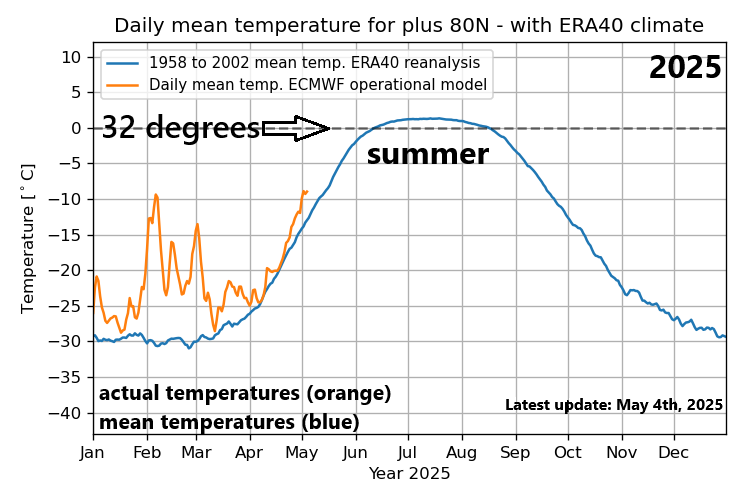New Study: Tide gages find no global ‘acceleration in sea level’ – But satellite data ‘manipulated’ to show acceleration
Via: http://www.ijesi.org/papers/Vol(6)8/Version-1/G0608014851.pdf Abstract: Sea level changes is a key issue in the global warming scenario. It has been widely claimed that sea is rising as a function of the late 20th’s warming pulse. Global tide gauge data sets may vary between +1.7 mm/yr to +0.25 mm/yr depending upon the choice of stations. At numerous individual sites, available tide gauges show variability around a stable zero level. Coastal morphology is a sharp tool in defining ongoing changes in sea level. A general stability has been defined in sites like the Maldives, Goa, Bangladesh and Fiji. In contrast to all those observations, satellite altimetry claim there is a global mean rise in sea level of about 3.0 mm/yr. In this paper, it is claimed that the satellite altimetry values have been “manipulated”. In this situation, it is recommended that we return to the observational facts, which provides global sea level records varying between ±0.0 and +1.0 mm/yr; i.e. values that pose no problems in coastal protection. Keywords: Manipulation, observational facts, satellite altimetry, sea level change, tide gauges ————————————————————————————————————————————— Date of Submission: 26-07-2017 Date of acceptance: 05-08-2017 … V. CONCLUSION Satellite altimetry is a new elegant tool to view the changes in sea level over the globe, maybe especially the spatial changes, which, indeed, verified the long-term notion that sea level change over the last 5000-6000 years are dominated by the redistribution of water masses [29]. The temporal changes, on the other hand, has always remained very questionable as they seem to over-estimate observed sea level changes by 100-400% [9-16]. It seems quite weird to claim that it would be the satellite altimetry that is right and that the true observations in the field are wrong (still this is what the people around the IPCC and the Paris agreement at COP21 continue to claim). Fig. 1 reveals what is going on. It is the satellite altimetry data, which have been “corrected” to give a rise in the order of 3.0 mm/yr. This “correction” [19-21] may, of course, be classified as a “manipulation” of facts, like the manipulation temperature measurements recently revealed [1-3]. In this situation, there are all reasons to return to solid observational facts [11-16].Those facts are controllable, and this is a key criterion in science.The global perspective is general stability to a minor rise with variations between ±0.0 and +1.0 mm/yr [16]. This poses no problem for coastal protection. Therefore, we should free the world from the horror issue that low-lying coasts and islands will become seriously flooded in this century. Up to the present, there has been no convincing recording of any acceleration in sea level, rather the opposite: a total lack of any sign of an accelerating trend. For full study see here. # End study excerpt Related Links: Sea levels have been rising since the last ice age ended more than 10,000 years ago. There is currently no acceleration in sea level rise. Sea level rise hysteria can be cured by looking at tide gauge data Sea Level 2000 years ago higher than today? Roman coastline discovered two miles inland Bjorn Lomborg About Those Non-Disappearing Pacific Islands – ‘Total land area of the islands has actually grown’ Former NASA Climatologist Dr. Roy Spencer in 2016: “Sea level rise, which was occurring long before humans could be blamed, has not accelerated and still amounts to only 1 inch every ten years. If a major hurricane is approaching with a predicted storm surge of 10-14 feet, are you really going to worry about a sea level rise of 1 inch per decade? Climatologist Dr. Judith Curry of Georgia Institute of Technology: ‘Sea level will continue to rise, no matter what we do about CO2 emissions.’ – ‘The IPCC figure 3.14 suggests that there is no acceleration, given the large rates of sea level rise in the first half of the 20th century. Until we have an understanding of variations in decadal and multi-decadal sea level rise, we can’t make a convincing argument as to acceleration.’ Meteorologist Tom Wysmuller: ‘For the past 130 years there has been ZERO acceleration in sea-level rise as directly measured by tide gauges in tectonically inert areas (land neither moving up nor down), even as CO2 has risen almost 40% in the same period.’ Peer-Reviewed Studies Demolish Warmists’ Sea Level Rise Scares: ‘Decelerated 44% since 2004′ – ‘Global sea levels have been naturally rising for ~20,000 years and have decelerated over the past 8,000 years, decelerated over the 20th century, decelerated 31% since 2002 and decelerated 44% since 2004 to less than 7 inches per century. There is no evidence of an acceleration of sea level rise, and therefore no evidence of any effect of mankind on sea levels. Global sea level rise from tide gauges (1.6 mm/year) is half of that claimed from satellites (3.2 mm/year). Which is right? – ‘There is no acceleration of the increase’ – [Climate Depot Note: According to tide gauges, Sea Level is rising LESS than the thickness of one nickel (1.95 mm thick) per year or about the thickness of one penny (1.52 mm thick) a year. According to satellite info it is rising slightly more than two pennies a year (3.04 mm)]


